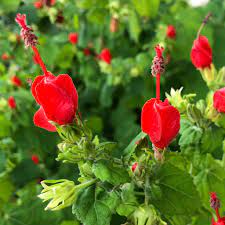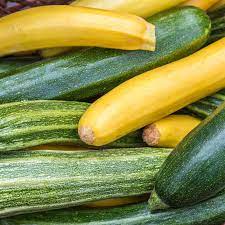|
|
Aransas/San Patricio Master Gardeners 2024 seminar Schedule Public Horticulture Education Series Texas A&M AgriLife Extension Service-Aransas County 892 Airport Road, Rockport, Texas Phone: 361-790-0103 Website: http://aransas-tx.tamu.edu |
|
Why become a Master Gardener? by Tom Prihoda, Master Gardener
Why might someone consider becoming a Master Gardener? One reason is you align with the goal, which is, “To increase gardening knowledge of the Association and the public. To support/assist Texas A&M AgriLife Extension by providing the community and visitors with educational programs and information on good gardening practices.” There are many and varied activities and reasons that work toward these objectives.
For example, our Master Gardener (MG) volunteer Help Desk has over 200 handouts available free to the public for the asking on various gardening topics. This includes an award winning booklet, “In Our Coastal Garden Native and Adapted Plants for the Coastal Bend”. Also, “Texas Superstar Strong and Stunning Plants for Texans” One of my favorite handouts is the “Aransas County Vegetable Variety Listing” which gives recommended species and varieties and times to plant these vegetables in both the spring and fall for this area. Topics covered by the 200 handouts include 42 short articles on insects, 21 on vegetables, 21 on fruits and nuts, and 21 on each of grass/lawns, trees and soil and 54 on earth-kind topics. MGs can volunteer to work the help desk, meet people and show them and give them whatever handouts they need..
Another reason to become a Master Gardener is the increased knowledge gained in the MG course and activities.. If you want to learn more about attracting wildlife, native plants, water conservation, ornamental trees and shrubs, insects, diseases, weed management, soils and plant nutrition, vegetable gardening, home fruit growing, plant propagation, composting and lawn care being an MG will get you that knowledge and more..
The MG training course in Aransas county is August to December of each year. Upon completion you are a MG graduate. It’s one of the best courses I ever took. A scientific expert on each topic every week gives much practical advice and information. The optional 50 volunteer hours during and following that training includes staffing the Help Desk and many other activities for options. These hours complete requirements to make one a certified MG. Until that point one is a MG Intern. Then, 20 volunteer hours and 10 continuing education hours per year serve to recertify one as a MG for the next year.
Working with other MGs maintaining our demonstration gardens and propagating plants for community plant sales are two main volunteer activities. Others include helping to plan the monthly public educational seminars, helping with the monthly tree inspections, writing short news articles for the local papers, helping spread the word about MG activities on social media and in the newspaper, helping update the county MG web page and preparing and giving talks with community organizations and the general public. One can work on our online store. One can volunteer at our information booths at community events like HummerBird Celebration and Farmer’s Market. We have officers and committees listed at our web page, txmg.org/aransas, to help assure all these activities are coordinated under the expert guidance of our AgriLife County Agent, Ginger Easton Smith. Honorary lifetime MG members are a wonderful asset. In addition to the volunteer work hours there are volunteer continuing education hours available.
In addition to the free monthly educational seminars there are many other continuing education opportunities. These include specialist MG training and attending regional conferences on many gardening topics. In August of 2025 Texas MGs are sponsoring an international 4 day virtual conference. These conferences include many good speakers on varied special gardening and related topics. The state MG office actually has a volunteer management system to keep track of all MG volunteer and continuing education hours and one can volunteer to work on that, as well as, on a weekly newsletter to keep MGs informed of activities.
A free information session on what is involved in the training series and becoming a Master Gardener will be held at the Aransas County Texas A&M AgriLife Extension office, 892 Airport Rd., on July 2, 1:30-2:30 p.m. There is no obligation in attending. For more information contact the Extension office at 790-0103 or [email protected]. July is course registration month.
Meeting and spending time with all these knowledgeable people with common interests on all these volunteer activities are some of the most satisfying reasons for being a MG. Four times a year our county MG association has a meeting with a group meal. During each weekly class for the MGs in training we share food and drinks during a break. All these activities amount to a life changing experience if you want to participate that much. Hopefully, we all learn to grow more plants, kill fewer and provide for ourselves, others and hundreds of insects, birds and other wildlife.
Other free seminars after the free orientation seminar.
Tue August 20 Noon-1pm “Fall Vegetable Gardening” Speaker: Wyatt Page, Gill’s Nursery
Tue Sep 17 Noon-1pm “Beneficial Garden Insects” Speaker: Stephen Biles, TAMU
Tue Oct 15 Noon-1pm “Poisonous Plants” Speaker: Whitney Lance, South Texas Botanical and Nature Center
Sat Oct 19 9am-Noon “Fall Tree Sale” Coastal Oaks Garden, 892 Airport Road, Rockport, TX
Tue Nov 12 Noon-1pm “What’s in your neighbor’s yard?” Speaker: Master Gardeners
Individuals with disabilities, who require an auxiliary aid, service, or accommodation in County Extension Office at least eight days prior to the ogram for assistance.
Educational programs of the Texas AgriLife Extension Service are open to all people without regard to race, color, sex, disability, religion, age, or national origin.
Red maple bonsai

Followed by pop up plant sale
in our gardens 1PM.
Presentation and POP-up plant sale are free and open to the public and held at the Aransas County office of AgriLife Extension, 892 Airport Rd in Rockport. Call 361-790-0103 for information. It is not necessary to sign up, just show up. Brown Bags are held the 3rd Tuesday of each month (except December) Each are followed by a POP-up plant sale in our propagation area, JOIN US!



